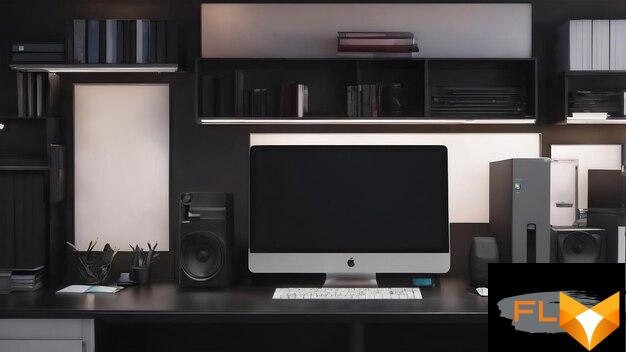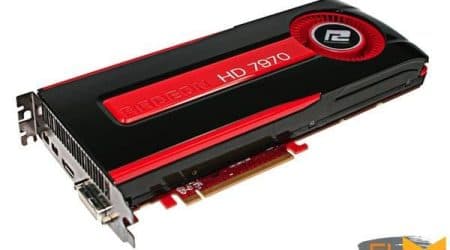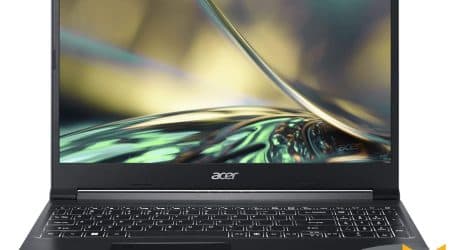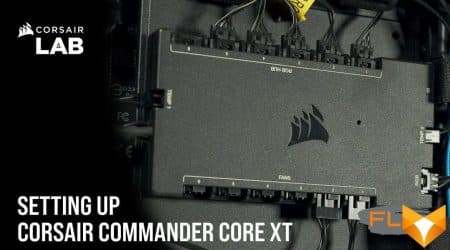


Best Desktop PCS and Workstations for High Performance and Productivity in 2025
For those seeking powerful computing solutions, the Apple Mac Pro stands out with its impressive processing capabilities and exceptional graphics performance. Featuring Apple’s M1 Ultra chip, it redefines what’s possible in content creation, video editing, and 3D rendering. This system supports advanced applications effortlessly, making it a reliable option for anyone aiming to elevate their work.
The HP Z8 G4 is another remarkable option, particularly for users requiring substantial memory and storage. With configurations allowing up to 3TB of RAM and multiple NVIDIA RTX graphics cards, it handles resource-intensive tasks ranging from simulations to extensive datasets without breaking a sweat. This machine offers octane power for engineers, animators, and data scientists alike.
For those who prefer a customizable rig, the Origin PC Millennium provides an excellent platform. It boasts powerful processors from Intel or AMD and is designed to support the latest components, ensuring longevity. Creators can tailor this setup according to their specific needs, whether it’s gaming, graphic design, or deep learning.
Lastly, the Lenovo ThinkStation P620 showcases AMD’s Ryzen Threadripper Pro architecture, pushing boundaries in multi-threaded performance. Ideal for 4K video editing and complex simulations, its versatility combined with impressive cooling solutions makes it a prime candidate for intensive workloads.
Top Specifications to Look for in a Workstation
Choose a high-performance processor, such as Intel Core i9 or AMD Ryzen 9, to handle demanding tasks smoothly. Opt for at least 32GB of RAM to facilitate multitasking without slowdowns.
For graphics-intensive applications, select a dedicated GPU like NVIDIA RTX 3080 or AMD Radeon RX 6800 XT. This will significantly enhance rendering times and overall graphics performance.
Invest in an SSD (Solid State Drive) with a minimum capacity of 1TB for rapid data access and improved workflow efficiency. Consider NVMe drives for even faster read/write speeds.
Ensure adequate cooling solutions, such as liquid cooling systems or high-quality air coolers, to maintain optimal operating temperatures during high-performance tasks.
Look for motherboards that support advanced connectivity options, including Thunderbolt 3 or USB 3.2 Gen 2, for seamless external device integration.
Choose a reliable power supply unit (PSU) with an 80 PLUS Gold rating to ensure energy efficiency and stable performance under load.
Evaluate the expandability of the chassis to accommodate additional components, such as extra RAM or storage drives, as your needs grow.
Don’t overlook display quality. Invest in high-resolution monitors (4K or higher) with accurate color reproduction for design and editing tasks.
Comparing GPU Options for Graphic Intensive Tasks
NVIDIA’s GeForce RTX 30 series remains a strong choice for high-resolution rendering, with the RTX 3080 providing outstanding performance for demanding applications. Equipped with Ray Tracing and DLSS technologies, this GPU efficiently handles real-time graphics while accelerating workflows in software like Adobe Premiere Pro and Blender.
AMD’s Radeon RX 6000 series offers competitive alternatives, particularly the RX 6800 XT. This option excels in traditional rasterization tasks and features ample VRAM, making it suitable for 3D rendering and gaming environments. The Infinity Cache technology reduces memory bandwidth needs, providing a performance boost in demanding scenarios.
VRAM Considerations
When selecting a graphics card, VRAM capacity plays a significant role. For instance, workloads involving large assets–video editing with high resolution or complex 3D models–benefit from GPUs with 10GB or more VRAM. NVIDIA’s RTX 3090, with its 24GB VRAM, is particularly advantageous for professionals dealing with extensive datasets or working in 8K environments.
Software Compatibility
Choose GPUs that align with the software ecosystem. NVIDIA cards typically integrate better with CUDA-accelerated applications, enhancing performance in workloads like deep learning and simulation. On the other hand, many artists favor Radeon GPUs for software that relies on OpenCL, such as Houdini or DaVinci Resolve. Select the option best suited to your specific toolkit for optimal results.
Understanding the Importance of RAM for Multitasking
To optimize multitasking, a minimum of 16GB of RAM is recommended for most users engaged in demanding tasks like graphic design, video editing, or software development. For intensive applications or simultaneous usage of multiple software, 32GB or more is advisable. RAM directly influences system performance, allowing smoother operation of several applications without lag.
RAM Specifications to Consider
Beyond capacity, consider the RAM type and speed. DDR4 is prevalent, but DDR5 offers better performance and efficiency. A speed of at least 3200 MHz is suitable for most users. Higher speeds benefit high-demand applications, particularly in multi-threaded scenarios. Additionally, ensure compatibility with your motherboard.
Impact on Workflow
More memory enables better management of open applications, enhancing workflow and reducing frustration. For example, switching between design software and web browsers can cause slowdowns if RAM is limited. Sufficient memory ensures quick access to files, expedites rendering time, and provides a seamless experience during resource-heavy tasks.
| RAM Size | Recommended Usage | Number of Applications |
|---|---|---|
| 8GB | Basic tasks, web browsing | 2-3 applications |
| 16GB | Office applications, light gaming | 4-6 applications |
| 32GB | Video editing, 3D rendering | 6-10 applications |
| 64GB+ | Professional content creation | Unlimited applications |
Choosing the Right Storage Solutions for Performance and Capacity
Select a mix of SSD and HDD solutions to optimize both read/write speeds and storage capacity. SSDs provide lower latency and faster data access, making them ideal for operating systems and applications, while HDDs offer larger capacities at a fraction of the cost, suitable for mass storage of files.
Types of Storage Solutions
- Solid-State Drives (SSDs):
- NVMe SSDs: Exceptional performance with high bandwidth; ideal for tasks requiring rapid data access, such as video editing.
- SATA SSDs: Slower than NVMe, yet significantly faster than HDDs; good for general applications and storage.
- Hard Disk Drives (HDDs):
- 7200 RPM Drives: Suited for applications needing decent speed alongside high storage capacity.
- 5400 RPM Drives: Generally used for bulk storage with less emphasis on speed.
Capacity Requirements
- Assess the maximum storage needs based on current projects and future growth. A minimum of 1TB is recommended for creatives working with high-resolution media.
- Consider data redundancy through RAID configurations. RAID 1 provides mirroring for data safety, while RAID 0 offers speed through striping.
- Evaluate cloud storage options for additional backup and flexibility. Services like Google Drive or Dropbox can complement local storage solutions.
Monitor performance metrics regularly to ensure storage meets evolving demands. Use benchmarking tools capable of measuring transfer speeds and latency for both SSDs and HDDs. These insights assist in making informed decisions on upgrades and replacements as technology advances.
Ergonomics and Design: Key Factors for Comfort During Long Hours
Select adjustable furniture to cater to individual heights and preferences. A chair with lumbar support and armrests can prevent back strain and promote better posture. Look for seats that allow height adjustments and tilt mechanisms to accommodate various work styles.
Position monitors at eye level to reduce neck strain. Utilize monitor stands or adjustable arms to achieve the correct height. Keeping the screen about an arm’s length away enhances comfort and reduces eye fatigue.
Invest in a quality keyboard and mouse designed to minimize wrist strain. Ergonomic keyboards encourage a neutral wrist position, while vertical mice reduce wrist twisting. Test various models to find the most comfortable fit.
Incorporate regular breaks into your routine. The 20-20-20 rule–taking a 20-second break to look at something 20 feet away every 20 minutes–can alleviate eye strain and refresh focus. Stand up and stretch to improve circulation and combat fatigue.
Lighting plays a significant role in comfort. Ensure your workspace uses natural light where possible or opt for adjustable task lighting to limit glare and shadows on screens. This reduces eye strain during long sessions.
Layout should facilitate movement. Keep essential tools within reach to minimize excessive reaching or twisting. A clutter-free workspace enhances focus and efficiency, contributing to a more comfortable atmosphere.
Investing time in finding the right combination of equipment and layout can significantly enhance comfort and productivity during extended work periods.
Assessing Value: Budget vs. High-End Workstation Choices
For those considering new systems, make a choice based on specific workloads and performance needs rather than just price. Budget options can provide adequate power for general tasks, while high-performance systems are designed to handle resource-intensive applications effectively.
Cost-Effective Solutions
- Processor: Look for CPUs like AMD Ryzen 5 or Intel Core i5. They offer robust multitasking capabilities suitable for everyday applications.
- Memory: Aim for at least 16GB RAM. This capacity is often enough for light editing and programming tasks without lag.
- Storage: A combination of a 512GB SSD and additional HDD for larger files provides a balanced approach to speed and capacity.
- Graphics: Integrated graphics can suffice for basic design work or video playback. Upgrade to a dedicated GPU like NVIDIA GTX 1660 for gaming or graphic-heavy editing.
Premium Options
- Processor: Invest in high-end options such as AMD Ryzen 9 or Intel Core i9 for seamless performance in rendering and coding tasks.
- Memory: 32GB or more RAM enhances workflow efficiency, especially with demanding software like Adobe Premiere or CAD applications.
- Storage: High-speed NVMe SSDs of 1TB or more significantly reduce loading times and improve overall responsiveness.
- Graphics: Consider GPUs such as NVIDIA RTX 3080 or equivalent for serious graphics processing, machine learning, or 3D rendering tasks.
Assess your workload requirements and choose appropriately. Investing in higher performance can lead to productivity gains, while budget setups are ideal for users with standard tasks. Adjust configurations based on anticipated usage for optimal value.
Q&A: The best desktop workstations
What are the advantages of using desktops over laptops for a home office setup?
Desktops typically offer better performance for the price compared to laptops, making them ideal for tasks that require high processing power. Additionally, desktops can be upgraded more easily, providing longer-term reliability and adaptability for evolving work needs in a home office.
How does a desktop computer with a Xeon processor benefit professional users?
A desktop computer equipped with a Xeon processor provides enhanced performance and reliability, especially for tasks that require heavy computing power, such as data analysis or 3D rendering. Xeon processors are designed for workstation computers, ensuring stability during long work sessions.
What should I consider when choosing a form factor for my desktop?
When selecting a form factor for your desktop, consider the available space in your home office, the type of components you plan to use, and your upgrade needs. Smaller form factors may save space but could limit future upgrades, while larger cases provide better airflow and expandability.
Can a laptop serve as a reliable workstation computer for graphic design tasks?
Yes, a laptop can be a reliable workstation computer for graphic design if it is equipped with sufficient RAM, a powerful GPU, and a high-resolution display. Many modern laptops are designed to handle demanding applications, making them suitable for professional creative work.
What are the key differences between a desktop computer and a laptop regarding performance?
Desktop computers generally offer superior performance due to their larger size, which allows for more powerful components and better cooling systems. Laptops, while portable, often have limitations in terms of processing power and upgradeability compared to desktops.
How do Xeon processors enhance the reliability of workstation computers?
Xeon processors are built with features that enhance reliability, such as error-correcting code (ECC) memory support and advanced thermal management. These features make workstation computers equipped with Xeon processors ideal for mission-critical applications where stability is paramount.
What is the best form factor for a desktop intended for gaming in a home office?
For gaming in a home office, a mid-tower or full-tower form factor is often the best choice. These sizes provide ample space for high-performance components, efficient cooling solutions, and room for future upgrades, ensuring reliability during intense gaming sessions.
Are there any specific benefits of using a laptop for remote work compared to a desktop?
Laptops offer unparalleled portability, allowing users to work from anywhere, which is essential for remote work. They also typically include built-in batteries, making them convenient for working in different locations without needing a constant power source, unlike desktop computers.
What factors contribute to the reliability of a desktop computer in a professional environment?
Key factors that contribute to the reliability of a desktop computer include high-quality components, effective cooling systems, and regular maintenance. Choosing reputable brands and ensuring proper setup can enhance the overall durability and performance of the desktop in a professional setting.
Can I upgrade my laptop to improve its performance as a workstation computer?
While laptops have limited upgrade options compared to desktop computers, you can often upgrade components such as RAM and storage drives. This can significantly improve the performance of your laptop as a workstation computer, making it more suitable for demanding tasks.
What are the top picks for the best workstation in 2024?
The top picks for the best workstation in 2024 include models like the Dell Precision series, HP Z4, and custom workstation builds that cater to specific needs such as 3D modeling and AI applications.
How do Dell Precision workstations compare to traditional desktop PCs?
Dell Precision workstations offer superior build quality and performance compared to traditional desktop PCs, particularly for business applications and tasks requiring powerful workstations, such as 3D modeling and rendering.
What are the benefits of using a small form factor desktop for a home office?
A small form factor desktop is ideal for home offices due to its compact design, which saves space while still providing the power needed for workstation tasks. These desktops can support powerful components, making them suitable for various applications.
Which workstation models are best for gaming and professional use?
The best workstation models for gaming and professional use include those equipped with mobile GPUs and Xeon processors, such as the Dell Precision series or HP Z4. These workstations provide the necessary performance for both gaming and demanding business applications.
What is the significance of ISV certification in workstation PCs?
ISV certification is crucial for workstation PCs as it ensures compatibility with independent software vendors’ applications. This certification guarantees that the hardware will perform reliably with software used in professional environments, such as CAD or 3D modeling tools.
How does the AMD Threadripper Pro enhance a custom workstation?
The AMD Threadripper Pro enhances a custom workstation by providing multiple cores and threads, which significantly boosts performance for multitasking and running demanding applications like video editing or 3D rendering.
What are the advantages of rack workstations in a business environment?
Rack workstations offer advantages such as space efficiency and scalability in a business environment. They are designed to fit into standard server racks, allowing for centralized management and easy access to powerful workstations for multiple users.
Can a Mac Studio compete with traditional workstation desktops?
Yes, a Mac Studio can compete with traditional workstation desktops, especially for creative professionals who require high performance for tasks like video editing and graphic design. Its M2 Ultra chip provides exceptional speed and efficiency tailored for creative workflows.
What should I look for in mobile workstations for on-the-go productivity?
When selecting mobile workstations, consider factors such as build quality, battery life, and performance specifications like the inclusion of an M2 Max or M2 Ultra processor. These features ensure that the workstation can handle demanding tasks while remaining portable.
What are some best budget options for powerful workstations in 2024?
Some of the best budget options for powerful workstations in 2024 include entry-level models from Dell USA and HP that offer good performance without breaking the bank. Look for configurations that include Xeon processors or AMD Ryzen chips tailored for business applications.



